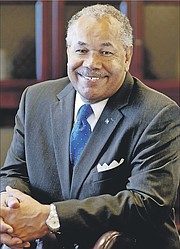In the second of a new weekly collaborative series on post-secondary education, Dr Rodney Smith, the president of the College of the Bahamas, looks at a momentous development in increasing the intellectual capital of the nation.
Two researchers from the London School of Economics, recently (August) explored data, using United Nations Educational Scientific and Cultural Organisation (UNESCO) materials on nearly 15,000 universities in about 1,500 regions across 78 countries, some dating back to the 11th century.
Anna Valero and John Van Reenen found that “increases in the number of universities are positively associated with future growth of GDP per capita (and this relationship is robust to controlling for a host of observables, as well as unobserved regional trends).”
They added that “number of universities per capita is associated with 4 per cent higher future GDP per capita” and that there appear to be “positive spillover effects from universities to geographically close neighbouring regions.” This holds true for the Caribbean region as well, despite the fact that the presence of national and regional universities is, historically, very recent.
Regional universities came about as a result of partnerships between respective governments - for instance, the University of the West Indies (UWI). Some Caribbean countries do not have economies that would allow development of a national institution and must, therefore, rely on contributions of more economically affluent countries for the sustainability of such regional institutions. Over time, however, as respective island economies develop, they create two-year or community colleges for awarding of diplomas, certificates and even associate degrees. These two-year institutions help to create a more educated workforce.
Driven by national growth and development, therefore, these two-year colleges expand, based on supply and demand, to award four-year degrees. This is followed by the awarding of limited graduate degrees accompanied by the need to increase research and advanced teaching activities. These institutions, initially serving as “teaching institutions”, begin to develop a limited focus on sociological, anthropological and cultural research.
For several years, the Caribbean region has had one “regional university”, UWI. Regional universities tend to serve initial developmental needs of developing states. However, as these island states develop, regional universities tend to not be able to address the specific, perceived national needs and issues of such member island states. In the Caribbean, over time, this has resulted in the growth of national universities within several island nations. Here in The Bahamas, highly educated Bahamians have led the charge in creating a National Development Plan. The establishment of a national university, therefore, is a vital part of this equation.
A national university will educate, train and provide economic opportunities for Bahamians throughout the country. Unlike a regional university, it will identify the social, educational and economic needs of all islands and work to create innovative solutions to address issues that are specific to the archipelago.
The University of The Bahamas, the country’s national university, will increase the intellectual capital of the nation and serve as a resource for governmental, corporate, civil society, social, economic and educational policy development based on research which is designed to serve the needs of all Bahamians.
The University of The Bahamas will help to strengthen the economy by providing higher levels of education and training at home, while decreasing the need to add millions of educational dollars to other countries.
It will help to strengthen the economy and provide the highest level of research to both the public and private sector, allowing millions of dollars spent on consultants to remain within the country.
It will expand educational and socio-economic development opportunities. By natural progression, therefore, within this climate of proliferation of national universities throughout the region, regional universities must become redefined and expand respective missions from being Comprehensive Regional Universities designed to address regional educational and training needs, to being Regional Research Intensive institutions, designed to more broadly contribute to global research initiatives and new knowledge.
The Bahamas has been ready, for some time, for the creation of its own national university. On November 10, the country will usher in a new beginning in educational, scientific, entrepreneurial and industrial growth. On that day the country will celebrate Charter Day for the University of The Bahamas.
Dr Rodney D Smith is the eighth President of the College of The Bahamas, appointed in October, 2014. He was previously Vice President of Administrative Services at Hampton University and initially served as COB President from 2004-2005.
NEXT WEEK: the value of technical vocational education and training in a growing economy.
• “Gain An Edge” is a weekly collaboration of the Lyford Cay Foundations, Bahamas Technical and Vocational Institute and the College of The Bahamas aimed at promoting a national dialogue on higher education. To share your thoughts, email gainanedge@tribunemedia.net





Comments
Use the comment form below to begin a discussion about this content.
Sign in to comment
Or login with:
OpenID